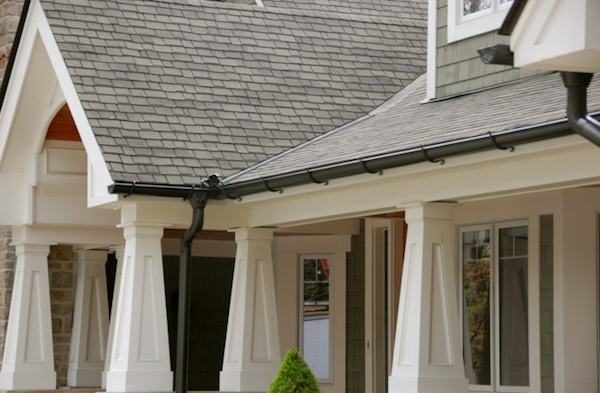
Alligatoring
Alligatoring is a rooftop condition that occurs when the seams open up or the tar and gravel cracks. This commonly happens to most tar and gravel roofs at the end of their lifespan, which is typically 10-12 years. In most cases, the roof should be replaced as soon as possible.
Aluminum Gutters
Aluminum is a moderately priced and rust-resistant material popular with newer installations. It comes unfinished or factory-painted. The downside is that aluminum tends to leak at joints because the metal expands and contracts too much for sealant to hold permanently. It also dents easily.
Copper Gutters
Copper is an expensive material that is strong, durable, rust-resistant and nearly maintenance-free. It will weather green unless you coat it with a clear sealant. It also needs to be installed by a professional.
Deck
A roof’s deck consists of sheathing and underlayment called roofing felt. The material used to finish the roof determines deck types. Most roofs require solid plywood or oriented strand board sheathing, while wood shingle and tile roofs need spaced board sheathing.
Dormers
Dormers create additional openings in your roof, which will affect your roof installation. One notable area is at the joints, which will need to be sealed with metal flashing. The style or dormer can also affect your roofing material. A shed dormer will decrease the slope of your roof over the opening. A gabled dormer often has higher pitches which will shed water more easily.
Fascia Board
Fascia board is the exposed end of your roof. The gutter is normally attached to this.
Flashing
Flashing is the metal or vinyl edging that is placed along roof intersections, dormers, chimneys, vent pipes and edges of the roof. It helps guide water away from roof joints and toward gutters. Most flashing is made of galvanized steel or aluminum. Galvanized steel is inexpensive but needs occasional painting to prevent rusting. Aluminum is moderately priced and naturally resistant to decay. Copper flashing is often used on slate or tile roofs. The most expensive, copper flashing also lasts the longest.
Galvanized Gutters
Galvanized gutters are strong and inexpensive, although they can rust.
Gutters
Gutters are the metal channels that are attached to the roof edges and used to draw water down and away from the house and its foundation. Most gutters consist of gutter sections, drop outlets and downspouts. Gutters can be constructed of aluminum, galvanized steel, vinyl, wood or copper.
Ready to start your roofing?
Find ProsIce Dams
Ice dams are formed when heat from the attic melts snow at the ridge or peak of the roof causing an “avalanche” of snow and ice to overflow the gutters. The melted water can then back up under the shingles and work its way into the house.
PVC Gutters
PVC, or vinyl, is a tough, maintenance-free, moderately priced material popular with newer installations. Vinyl gutter systems are favored by some because they are lightweight and can be easily snapped or glued together. However, vinyl gutters are not recommended for hot, sunny climates where they tend to become brittle, crack and fail quickly.
Ridge Vent
A ridge vent is a special vent that sits along the top ridge of your roof. Like other vents, it allows your attic to breathe, but it sits underneath the roofing material, making it less visible than standard vents. Ridge vents help to prevent ice dams and improper snow melt off.
Roofing Felt
Roofing felt is the protective layer that sits between the roof sheathing and the shingles.
Roof Pitch and Slope
Roof pitch and roof slope are two terms that are often used interchangeably, but they actually mean different things. Slope is described in inches of vertical rise per foot of horizontal run. For example, a gently sloped roof that rises 4 inches for every 12 inches of house covering is said to have a 4-in-12 slope. Roof pitch is expressed as a fraction, the ration of rise to the total span of the entire roof. The same gentle 4-in-12 slope translates into a 1:6 pitch.
Roof Surface
A roof’s surface is the area on which all the roofing material sits. Roofing surfaces can be made of a variety of materials. The most common material in the U.S. is plywood with a covering of sheathing, felt and roofing shingles.
Shingles
About 80% of homes in the U.S. have asphalt shingle roofs. These are constructed of 12 x 36 inch sections that look like individual shingles when installed.
Soffits
Soffits are vents under the roof overhang that allow your attic to breathe.
Vinyl Gutters
See PVC Gutters.
Water Diverter
Similar to gutters, a water diverter is a piece of metal that helps to control the flow of water as it drains from the roof.
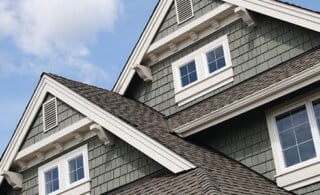 Roofing and Gutters Glossary
Roofing and Gutters Glossary 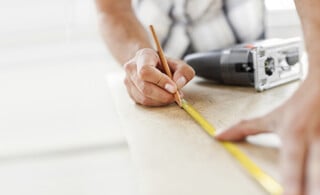 Fix-It 101: The Fix-It Literacy Guide
Fix-It 101: The Fix-It Literacy Guide 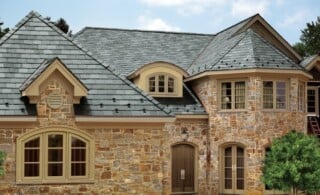 Best Asphalt Shingles – A Buyer’s Guide
Best Asphalt Shingles – A Buyer’s Guide 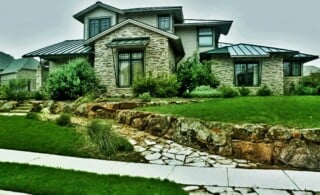 Green Building Glossary
Green Building Glossary 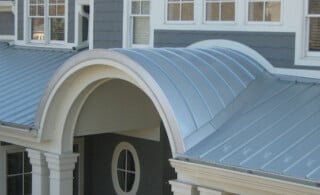 How to Keep Your Metal Roof Healthy
How to Keep Your Metal Roof Healthy 

Are You Familiar With This Topic? Share Your Experience.